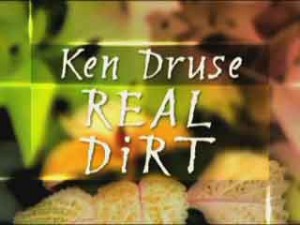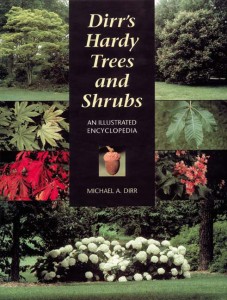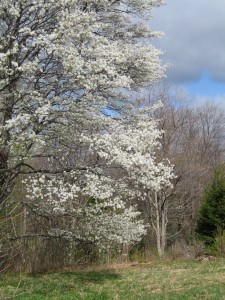Listen to GardenLine Radio Nov. 8!
November 5, 2014 by admin
Filed under In the News, Shade Gardening

I’ll be a guest of GardenLine radio host C.L. Fornari (shown here) this Saturday, Nov. 8, 8:00-10:00 am. Please call in with your questions!
I’m excited to be doing my first-ever radio interview this coming Saturday, November 8! I’ll be a guest of long-time radio host C.L. Fornari, whose show GardenLine airs on WXTK 95.1 FM out of Cape Cod on Saturdays from 8:00 am to 10:00 a.m. in the Eastern time zone.
Not in WXTK’s broadcast area? You can hear it live-streamed at the WXTK website. From the home page, click on “Listen Live” in the upper right-hand corner (and be sure to turn your sound up!).
This is a live, call-in show, so if you have any gardening questions for me (or C.L.), dial (888) 998-5951 or (508) 775-9985 on Saturday morning and talk to us. We’ll be following your lead, and this would be a great opportunity to get more information about any topic in The Shady Lady’s Guide to Northeast Shade Gardening that you wish I’d covered in more detail!
In addition, I’m hoping we’ll get to a few things that have been on my mind lately, such as this thought that I shared with C.L. a few weeks ago:
“I have found that over time my entire thought process about gardening has shifted dramatically. I rarely think of plants in terms of “like” or “dislike,” for instance; instead, I think about what the plant is capable of doing. Basically, I focus on a plant’s strengths rather than my subjective reaction to it. I see gardening largely as a problem-solving exercise.”
So, whether you’re trying to solve a gardening problem or want to share one of your own solutions, please join us! I’m looking forward to talking with you then.
Real Dirt Redux/More on Picking Plants
June 15, 2014 by admin
Filed under Garden Design, In the News
 So, when I’m not gardening, I can often be found writing about gardening or talking about gardening. Apparently unaware of just how much I can talk about gardening, “gardening superstar” Ken Druse foolishly invited me to chat with him on his podcast and public radio program Real Dirt. But it’s actually my second time as his guest, which means he had no excuse!
So, when I’m not gardening, I can often be found writing about gardening or talking about gardening. Apparently unaware of just how much I can talk about gardening, “gardening superstar” Ken Druse foolishly invited me to chat with him on his podcast and public radio program Real Dirt. But it’s actually my second time as his guest, which means he had no excuse!
To hear our latest conversation at Ken’s website, click here; for the older podcast, click here and scroll down until you come to the May 7, 2010 episode.
In the new segment, we commiserate a bit about Ken’s frustration with garden media outlets (we will not name names) that are sometimes guilty of talking about plants as if they were furniture. Ken says that equating gardening with decorating the outdoors will just get you into trouble, and I agree. We also talk about favorite shade plants and how gardeners can make better choices by learning to value traits like resistance to disease and deer browsing more highly, instead of focusing solely on flowers. This is basically a matter of separating your wants from your needs with respect to garden plants, and training yourself to give adequate weight to the latter.
I’d been wanting to write a blog post on this subject, anyway, because of a recent experience that I thought illustrated the point pretty well. Not long ago, I had occasion to offer advice to someone seeking a replacement for an ash tree that had met its demise. She specified some challenging conditions the tree would have to tolerate, including clay soil that can get very dry in July and August; a hardiness zone (5B); a desired height at maturity (minimum 30 feet), and if possible, ornamental flowers and/or fruit. If it had ornamental flowers, she wanted it not to conflict with specimens of Rhododendron catawbiense (a late spring bloomer) planted nearby. She also wanted it to be fast growing yet not weak, which in my opinion was the most problematic of her requests because as a general rule those two traits are mutually exclusive (i.e., fast growing usually implies weak-wooded and short-lived), although some trees are worse than others in that regard.
So, given all these needs and wants, what would you do to find a suitable tree if you didn’t have a panel of experts to ask? The approach I recommended reminded me of the old adage about the difference between giving a hungry man a fish and teaching a hungry man how to fish (presumably after giving him a fish anyway so he was no longer hungry, but I digress…).
Rather than give her a list of suggestions, I told her how I would go about generating a viable list. (In my analogy, this would be teaching her how to fish.) First, I referred her to an excellent woody plant book (Dirr’s Hardy Trees and Shrubs by Michael A. Dirr) that I knew to contain lots of lists of trees by characteristic, including height, tolerance of heat and drought, etc. By cross-referencing lists for the most important of the traits she needed, she could come up with a short list, and then whittle it down further by considering lower priority traits.
By starting off with just height, tolerance of dry soil, and cold hardiness, she would have come up with a list of about a dozen trees. About half of those could then have been eliminated on the basis of their weak wood, tendency to become “weed trees,” or other undesirable characteristics. Candidates that remained included our native thornless honey locust (Gleditsia triacanthos var. inermis) and Indian bean tree (Catalpa speciosa or C. bignoniodes), as well as non-native European hornbeam (Carpinus betulus) and hedge maple (Acer campestre).
At that point, she would have had to do some additional research to settle on the one that was best for her. It would also have been advisable to research specific superior cultivars. As a last step, I’d call my local cooperative extension office or agricultural experiment station to discuss my final round draft picks, as well as to make sure none of my choices were on my state’s list of banned or invasive plants. (Click here to visit a website with links to invasive plant information by state.)
Interestingly, one tree that my approach didn’t generate (because it wasn’t on the height list in Dirr’s book that I would have expected) would also have been an excellent choice, in my opinion: tree-form shadblow (Amelanchier arborea or perhaps A. x grandiflora). I gushed about this beauty in my post Alight with White: Native Flowering Trees to Brighten Spring Days. While shadblow is usually thought of as wanting to grow at the woodland edge, I know from observation that wild, native shadblow in my area naturally grow in very punishing conditions on hot, dry, south-facing slopes. Whether nursery stock available at retail could be expected to perform like that is one of the things I’d discuss with the woody plant experts at cooperative extension. But regardless, it’s got a lot going for it: a moderate growth rate (resulting in a reasonably long age and reasonably strong wood), a very attractive form, subtly striated bark, delicate flowers that appear far earlier than those of Rhododendron catawbiense and would not cause a conflict, small fruits that birds eat and hence don’t cause a big mess, good fall color, and much more.
But even without that tree on the list, the process would have generated some good choices and functioned like a signpost pointing the gardener in the right direction. It would have formed the basis for a useful conversation with cooperative extension. Finally, it could have helped circumvent a problem gardeners don’t always anticipate: with some regularity, the woody plant you go to the nursery intending to buy isn’t available, or perhaps you just can’t find a good specimen. You want to have a second choice, and even a third, just in case your first choice can’t be found with ease. I am fond of saying that gardeners should almost always go to nurseries knowing in advance what they want to buy. This process helps you get to a place of confidence about your prospective garden addition, and also helps keep you from getting derailed if your number one choice doesn’t work out.
So, what I just described is basically the problem-solving process I go through every time I’m called on to choose plants. It can be applied to perennials with just a few modifications, taking into account that failure is much more likely with perennials than with woody plants, in part because perennials are much more prone to animal browsing. It really just boils down to recognizing that what you need is just as important as what you want, and trying to strike a satisfactory balance. If you try this method, let me know how it works for you!



